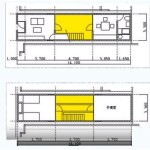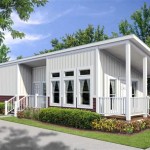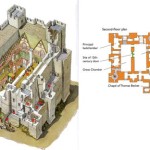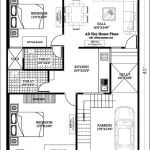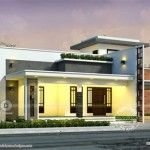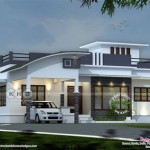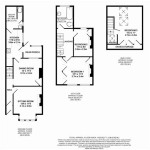Fallingwater House Site Plan: An Architectural Marvel in Harmony with Nature
Fallingwater, designed by renowned architect Frank Lloyd Wright, is celebrated for its seamless integration with its natural surroundings. The site plan is crucial to understanding how Wright achieved this architectural feat. It reveals a thoughtful approach that respects the existing landscape and harnesses its inherent beauty. The design transcends simply placing a building on a site; it intertwines the built environment with the natural world, creating a symbiotic relationship between architecture and nature.
Key Points: Site Integration and Topography
The house is built directly over Bear Run, a stream that cascades down a series of waterfalls. This location was not chosen arbitrarily. The sound of the water, the cool air, and the dramatic views are integral to the experience of the house. The topography of the site, with its steep slopes and rocky outcroppings, presented significant design challenges, but these were embraced by Wright and transformed into opportunities. Instead of leveling the land, the house conforms to the natural contours, becoming an extension of the landscape itself. The cantilevered terraces mimic the natural rock ledges, further blurring the lines between the built and natural environments.
Key Points: Material Palette and Natural Forms
The choice of materials is essential to Fallingwater's integration with its site. Local sandstone, quarried nearby, forms the core of the house, blending seamlessly with the surrounding rock formations. Concrete, poured in situ, allows for the creation of the cantilevered terraces and organic forms echoing the natural world. The warm tones of the stone and concrete complement the surrounding foliage. Large expanses of glass erase the visual boundaries between inside and out, bringing nature into the living spaces. These choices demonstrate Wright's philosophy of organic architecture, which emphasizes harmony between human habitation and the natural world.
Key Points: Orientation and Views
The orientation of the house maximizes the impact of the natural surroundings. Large windows frame breathtaking views of the waterfall and the surrounding forest. The open plan living spaces allow for uninterrupted sightlines, enhancing the connection with nature. Terraces extend the living spaces outwards, providing intimate contact with the landscape. Careful placement of windows and terraces ensures privacy while maintaining a sense of openness. The interplay of light and shadow throughout the day, filtered through the surrounding trees, adds another dimension to the experience of the house.
Key Points: Circulation and Access
The approach to Fallingwater is carefully choreographed to heighten the sense of discovery. The driveway winds through the woods, offering glimpses of the house before revealing its full grandeur. A narrow bridge leads to the entrance, creating a sense of transition from the natural world to the built environment. Inside, the circulation paths flow organically, mirroring the natural contours of the site. Vertical circulation via stairs emphasizes the multi-level design, connecting the various levels of the house to the surrounding landscape.
Key Points: Preservation and Conservation
The site plan also considers the preservation of the surrounding natural environment. Minimal disturbance of the existing vegetation was a priority during construction. Natural landscaping practices further emphasize the integration of the house with its surroundings. The site has been carefully managed over the years to maintain its original character. The Western Pennsylvania Conservancy, which now owns and operates Fallingwater, continues to work to preserve this architectural masterpiece and its natural setting for future generations. This ensures that the delicate balance between the built and natural environment remains intact.
Key Points: Impact and Legacy
Fallingwater's innovative site plan has had a profound impact on architectural design, influencing countless architects and inspiring a greater appreciation for the integration of buildings with their natural surroundings. It stands as a testament to Wright's vision and his deep understanding of the relationship between humanity and nature. The site plan's integration with the landscape showcases a unique approach to architecture that respects and celebrates the natural world. Its design principles continue to be studied and admired, serving as a model for sustainable and environmentally conscious design.
Key Points: Spatial Organization and Flow
The spatial organization of Fallingwater is designed to foster a sense of connection and flow between interior and exterior spaces. The open plan living areas create a seamless transition from indoors to outdoors. The placement of interior walls and partitions is carefully considered to minimize visual barriers and maximize views. The various levels of the house are interconnected, creating a sense of continuity and flow. The use of cantilevered terraces extends the living spaces outward, blurring the boundaries between the built and natural environment. This careful arrangement of spaces allows for a harmonious interaction between the inhabitants and the surrounding landscape.
Key Points: The Waterfall as the Focal Point
The waterfall itself serves as the central organizing element of the site plan. The house is positioned not just near the waterfall, but directly over it, incorporating the natural element into the structure itself. The sound of the water is a constant presence throughout the house. The various terraces and balconies offer different perspectives on the waterfall, enhancing its visual impact. The design emphasizes the dynamic interplay of water, rock, and vegetation, creating a truly immersive experience. Wright's genius lies in his ability to incorporate a natural element so seamlessly into the architectural design, making it an integral part of the experience of the house.

Ad Classics Fallingwater House Frank Lloyd Wright Archdaily

Ad Classics Fallingwater House Frank Lloyd Wright Archdaily

4 First Floor Plan Fallingwater State Route 381 Stewart Township Ohiopyle Fayette County Pa Library Of Congress

Fallingwater House By Frank Lloyd Wright Casa Da Caa De água Cachoeira

Fallingwater Designing Buildings

Fallingwater Drawings And Plans Falling Water House Waterfall

Model Frank Lloyd Wright S Falling Water Live In Sketchup Happenings Community

Ad Classics Fallingwater House Frank Lloyd Wright Archdaily

Falling Water Frank Lloyd Wright Modern Architecture A Visual Lexicon

2 Site Plan Fallingwater State Route 381 Stewart Township Ohiopyle Fayette County Pa Library Of Congress

